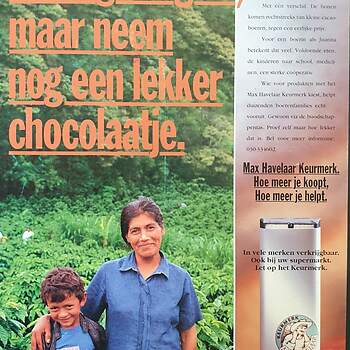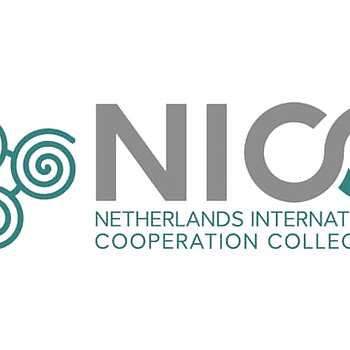The name of this foundation came from the title and the main figure in a novel written by the Dutch writer Eduard Douwes Dekker (Multatuli) on the poor labour and living conditions on plantations and communities in Indonesia during the colonial era.
Contacts between the development organisation Solidaridad and the Mexican coffee cooperative UCIRI were the first incentive for the start of the foundation. Isaías Martínez Morales of UCIRI phrased the motivation for the initiative:
"We don't need help; we are not beggars. If you would pay us a reasonable price for our coffee, we can do without help from now on." (25 jaar Fair Trade, van Koffie tot nu, p. 9)
The aim of Max Havelaar was to work together with the poor and suppressed in the 'third world' by supporting initiatives that were aimed to shape and sustain a new socioeconomic structure, leading to the improvement of the living standard of the involved populations.
What was new about the Max Havelaar Foundation, was that it introduced Fair-trade labelling for fair-trade products. The trade criteria that they created, enabled them to bring their fair-trade products to supermarkets. Every trader and coffee roaster that followed these criteria could join the initiative. Farmers organisations were also checked to see if they met all the requirements. Therefore, by using the Max Havelaar label, the organisation could give consumers the choice and the guarantee that their coffee was bought from organisations of small farmers working under fair trading conditions.
The Max Havelaar coffee got a lot of public attention during and after the launch of the label, partially because of the help of Prince Claus, husband of Queen Beatrix and actively involved in organisations aiming to support people in developing countries. At the start of 1989, already 65% of Dutch consumers knew the Max Havelaar certificate. The success of Max Havelaar coffee stimulated those involved to broaden the initiative by offering new kinds of coffees but also by introducing new certificated products, such as cocoa, bananas and cotton jeans.
The Max Havelaar initiative was quickly followed by other organisations in European countries. These organisations founded an international umbrella organisation in 1997: Fairtrade Labelling Organisations International. Within 10 years, certified coffee was introduced in multiple countries and sold outside of the circuit of Dutch world shops and alternative importers.
The breakthrough from a marginal to a broad movement was seen by some as a large success, as the movement grew in economic terms and could, therefore, reach more producers while also more Dutch people became aware of the poor living conditions of many farmers and plantation workers in developing countries. However, others were unhappy with this step because activists now also started to work with companies that did not share their ideals, diluting them.
Changing the market by using the market itself instead of by politics proved to be rather successful in the 1970s, for example in the case of the campaign of the Dutch Angola Committee in 1973 to boycott coffee from Angola in the Dutch Albert Heijn supermarkets under the slogan ‘Coffee for Holland means blood for Angola’ as a protest against the Portuguese colonial war in Angola in which forced labour was used in coffee production.
In the 1980s, activists wanted to go a step further: not only naming the products that were not acceptable but also working with corporations and consumers towards alternatives. More critical activists gradually also got more interested in the possibilities of the market. Producers asked them to sell more products and subsidies for organisations raising awareness around Third World circumstances became scarcer. The market offered a complementary approach and options for alternative actions directed at national or international politics. By bringing fair-trade products to supermarkets, the fair-trade movement could attract customers who did not come to the Wereldwinkels (world shops), but who shared its ideals. A bigger share of the market could subsequently help to persuade corporations and politicians to act.
In 2011, 89,5% of the revenue of fair-trade products came from products sold in supermarkets.
Sources:
De Goede, I. & Ruben, R. (2012). Nederlanders & Fairtrade 2011. Amsterdam: NCDO.
NICC Archive:
A04195: Sanne Groot Koerkamp and Bente (2001) 25 jaar Fairtrade. Max Havelaar van Koffie tot Nu.
Peter van Dam, Wereldverbeteraars. Een geschiedenis van fair trade (Amsterdam 2018).


